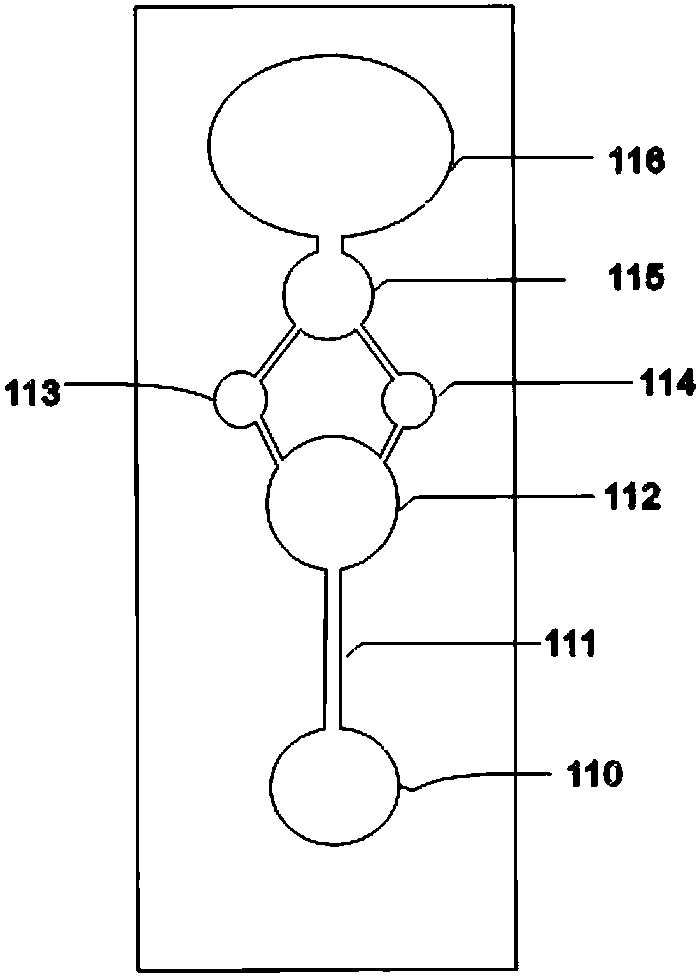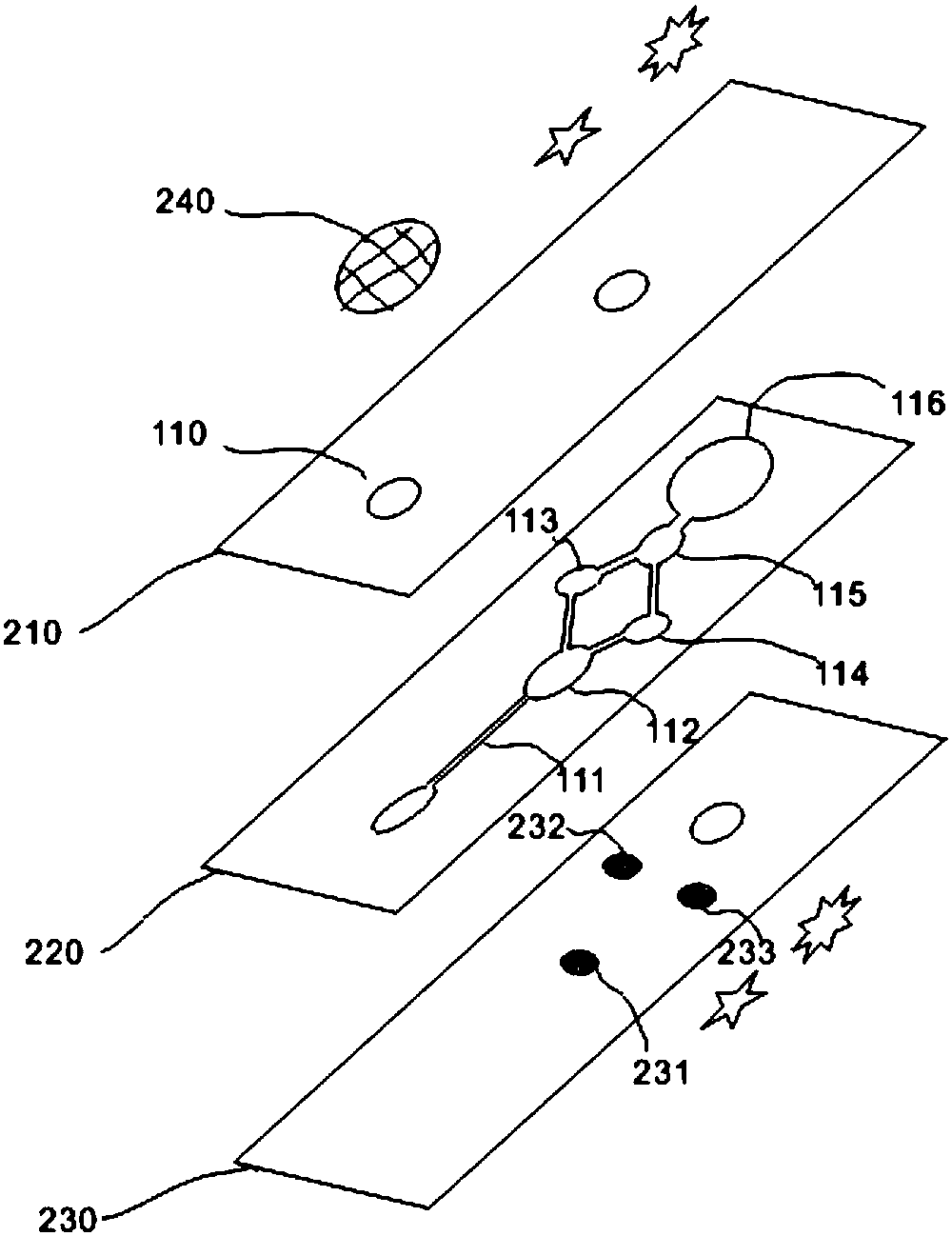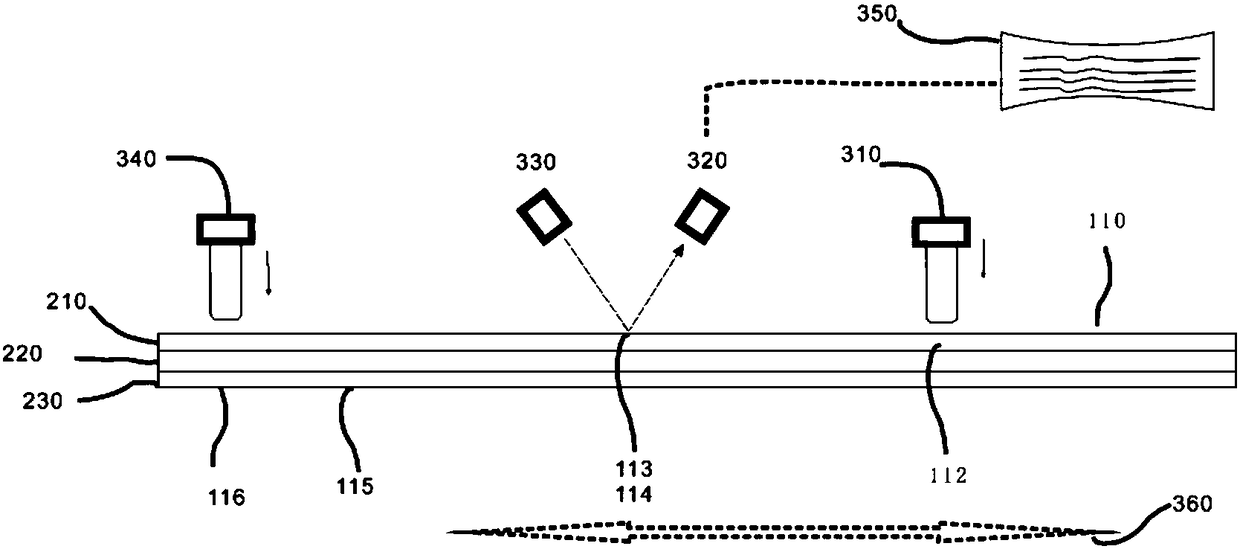Device and method for testing activated partial thromboplastin time
A technology of thromboplastin time and activated part, which is applied in the field of devices for testing activated partial thromboplastin time, can solve the problems of cumbersome, laborious and time-consuming operations, and achieve the effects of simple operation, simple preparation method and broad prospects
- Summary
- Abstract
- Description
- Claims
- Application Information
AI Technical Summary
Problems solved by technology
Method used
Image
Examples
Embodiment 1
[0030] The reagent contained in reaction zone 1 can be divided into two parts: activator and APTT assay reagent. After the blood sample flows through the reaction zone 1, the blood sample is fully contacted and activated. Among APTT assay reagents, phospholipids and activators mainly play an active role. Among them, activators play a role in activating blood, and the source and type of phospholipids are very important to the final test results. Specifically, in this example, 0.5 mg ellagic acid, 1 mg phosphatidylserine, 0.8 mg phosphatidylethanolamine, 3.5 mg sodium chloride, 1.5 mg PEG 6000, 0.2 mg thimerosal were added to 10 mL of 50 mM HEPES buffer solution , after fully dissolving, set the pH to 7.0, and use it as a reagent to be added dropwise in reaction zone 1.
[0031] Reaction area 2 can be used as a quality control area, and only when the test results in the quality control area meet the experimental requirements after analysis, the final test results are considered...
Embodiment 2
[0034] The APTT test device prepared by the present invention has many differences from the APTT test kit, such as the state of the two active ingredients when they react with the blood sample to be tested. For the former, the active ingredient is evenly dispersed in the reaction area of the substrate in the form of a solid film; for the latter, the reaction reagent exists in the form of liquid when participating in the reaction. The former reagent is to prepare a solid thin film in which the reagents are evenly dispersed on the substrate. The specific implementation method of the preparation is: add the reagent in the reaction zone 1, the reagent in the reaction zone 2 and the reagent in the reaction zone 3 dropwise into specific areas of the substrate (respectively attached figure 2 231, 232 and 233 shown in ), and dried at 70° C. for 10 min to obtain a substrate with attached reagents.
Embodiment 3
[0036]On the substrate (230) of the attached reagent prepared in Example 2, stick the double-sided adhesive tape (220) and the hydrophilic upper cover (210) successively (such as figure 2 shown). The schematic diagram of the device structure is attached figure 1 and 2 shown. 110 in the sample loading area is a sample loading hole, and 240 blood filter membranes are installed above 110, and its function is to separate plasma from blood cells. The reaction zones 112, 113 and 114 are respectively reaction zones 1, 2 and 3, and due to the supporting effect of the double-sided adhesive tape, the reaction zones 1, 2 and 3 have certain volumes. The topmost is the sample loading control area, wherein 115 is a stop node, and 116 is an air bag. It should be noted that the material at the corresponding positions of 112 and 116 on the 210 or 230 layer is an elastic material, which can be pressed manually or automatically by the equipment at the corresponding position. Under the actio...
PUM
 Login to View More
Login to View More Abstract
Description
Claims
Application Information
 Login to View More
Login to View More - R&D
- Intellectual Property
- Life Sciences
- Materials
- Tech Scout
- Unparalleled Data Quality
- Higher Quality Content
- 60% Fewer Hallucinations
Browse by: Latest US Patents, China's latest patents, Technical Efficacy Thesaurus, Application Domain, Technology Topic, Popular Technical Reports.
© 2025 PatSnap. All rights reserved.Legal|Privacy policy|Modern Slavery Act Transparency Statement|Sitemap|About US| Contact US: help@patsnap.com



